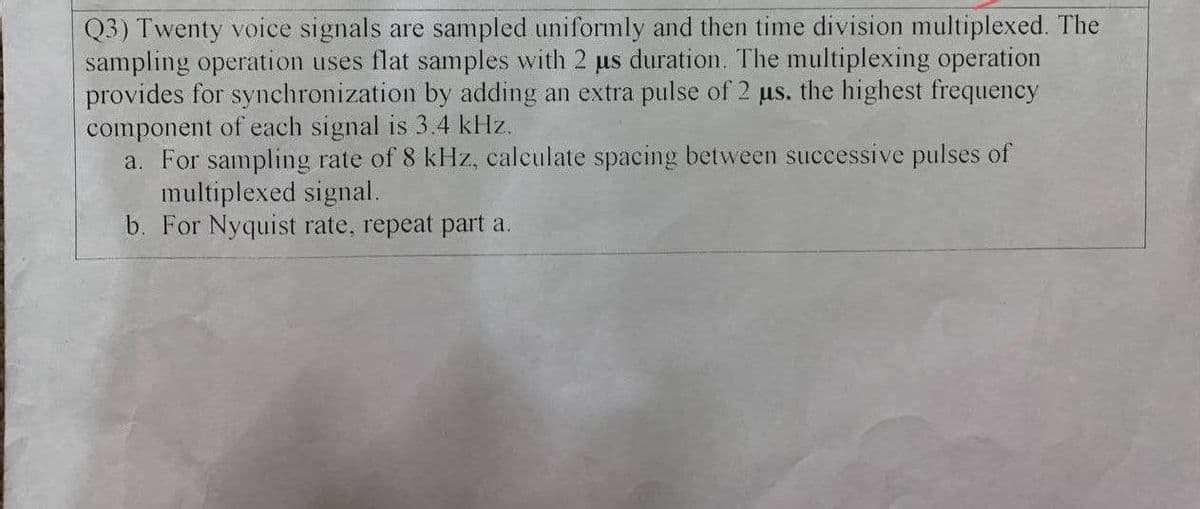Q3) Twenty voice signals are sampled uniformly and then time division multiplexed. The sampling operation uses flat samples with 2 us duration. The multiplexing operation provides for synchronization by adding an extra pulse of 2 us. the highest frequency component of each signal is 3.4 kHz. a. For sampling rate of 8 kHz, calculate spacing between successive pulses of multiplexed signal. b. For Nyquist rate, repeat part a.
Q3) Twenty voice signals are sampled uniformly and then time division multiplexed. The sampling operation uses flat samples with 2 us duration. The multiplexing operation provides for synchronization by adding an extra pulse of 2 us. the highest frequency component of each signal is 3.4 kHz. a. For sampling rate of 8 kHz, calculate spacing between successive pulses of multiplexed signal. b. For Nyquist rate, repeat part a.
Delmar's Standard Textbook Of Electricity
7th Edition
ISBN:9781337900348
Author:Stephen L. Herman
Publisher:Stephen L. Herman
ChapterS: Safety, Basic Electricity And Ohm's Law
Section: Chapter Questions
Problem 8RQ: What is an MSDS?
Related questions
Question

Transcribed Image Text:Q3) Twenty voice signals are sampled uniformly and then time division multiplexed. The
sampling operation uses flat samples with 2 us duration. The multiplexing operation
provides for synchronization by adding an extra pulse of 2 us. the highest frequency
component of each signal is 3.4 kHz.
a. For sampling rate of 8 kHz, calculate spacing between successive pulses of
multiplexed signal.
b. For Nyquist rate, repeat part a.
Expert Solution
This question has been solved!
Explore an expertly crafted, step-by-step solution for a thorough understanding of key concepts.
Step by step
Solved in 3 steps

Knowledge Booster
Learn more about
Need a deep-dive on the concept behind this application? Look no further. Learn more about this topic, electrical-engineering and related others by exploring similar questions and additional content below.Recommended textbooks for you

Delmar's Standard Textbook Of Electricity
Electrical Engineering
ISBN:
9781337900348
Author:
Stephen L. Herman
Publisher:
Cengage Learning

Delmar's Standard Textbook Of Electricity
Electrical Engineering
ISBN:
9781337900348
Author:
Stephen L. Herman
Publisher:
Cengage Learning